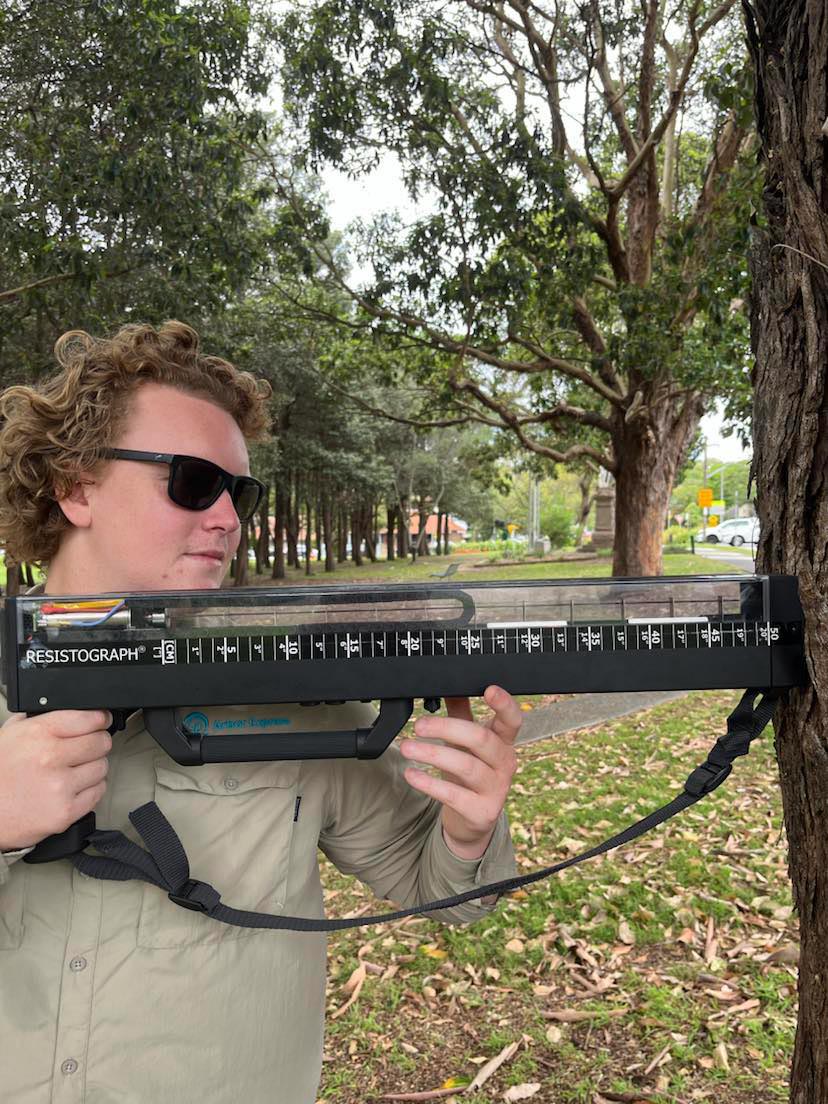Any tree examination initially requires a detailed visual inspection of the tree, including its roots, trunk/stem, crown and location. If the visual inspection and diagnosis do not provide sufficient information to assess the traffic safety of the trees or to offer objective evidence of findings, we employ the following advanced technology.
A Resistograph® is a precision instrument designed to assess the internal condition of trees by measuring wood density. It generates a detailed profile of the tree’s internal structure, highlighting areas of decay, hollows, cavities or fungal infections on a graph in real time.
Early Detection of Issues: The Resistograph identifies internal problems before they become visible, allowing for proactive management of tree health.
Informed Decision-Making: By understanding the extent of internal decay or structural weaknesses, a Level 5 Arborist can provide a more comprehensive report for the council regarding tree removal or pruning.
Non-Invasive Assessment: The Resistograph causes minimal harm to the tree during testing, preserving its health while providing critical internal information.
The Picus Test: utilises sound impulses to provide an inside view of the trees condition. It evaluates hidden decay, invisible cavities, and cracks.
Arbor Express has invested in the latest Rinntech Resistograph, model 650, designed specifically for Australian hardwoods. Our Level 9 Arborist, who handles complex assessments such as tree biomechanics, decay analysis, and environmental impact studies, collaborates with our climber to interpret these results. A detailed Level 5 Arborist report is then prepared to determine the overall condition of the tree
